| 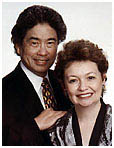 Effective
Teaching...
Effective
Teaching...
by Harry and Rosemary Wong
March
2004
A
Well-Oiled Learning Machine
Is your classroom in chaos or is it a well-oiled learning
environment?
• An effective teacher MANAGES a classroom.
• The ineffective teacher DISCIPLINES a classroom.
You may be the best cook in the world, but you would fail as an
owner of a restaurant if you do not know how to manage the restaurant.
Such things as accounting procedures, customer relationships, and
health and safety procedures may be more important than how to make
a fettuccine alfredo.
Likewise, the single most important factor
governing
student learning is not discipline; it is how a teacher
manages a classroom.
Where there is no management, students risk failure because
of the lack of structure. Effective teachers structure
their classrooms with procedures and routines. Students readily
accept the idea of having a uniform set of classroom procedures,
because it simplifies their task of succeeding in school.
Efficient and workable procedures allow a great variety of activities,
often several at one time, to take place during a school day, with
a minimum of confusion and wasted time. If no procedures are
established, you will waste much time organizing each activity.
Students will have to guess what to do. As a result, they
could develop undesirable work habits and behaviors that would be
hard to correct.
Your Classroom Procedures
How to Determine Your Classroom Procedures
- Decide what activities will be taking place during the school
year.
- Make a list of the PROCEDURAL steps the students must follow
to participate in these activities.
Here are some possible procedures:
Entering the classroom
If you are absent
If you are tardy
End of period class dismissal
Listening to and responding to questions
Indicating whether or not you understand
Coming to attention
Working cooperatively
Changing groups
Keeping your notebook
When you need help/conferencing
Keeping a progress report
Finding directions for each assignment
Collecting/returning student work
Getting materials without disturbing others
Handing out equipment at recess
Moving about the room
Walking in the hallways
Heading of papers
When you finish early
It is the procedures that set the class up for achievement.
Student achievement at the end of the school year is directly related
to the degree to which the teacher establishes good control of the
classroom procedures in the very first week of the school year.
When a class is managed with procedures and the students know these
procedures, they will more willingly do whatever you want them to
do. You can then be an exciting, creative, and informative
teacher with a well-oiled learning environment.
Reference for the above procedures can be found in The
First Days of School, Unit C, specifically chapter
20.
Fourth Grade Procedures
Let’s see how a teacher has adapted what we have just presented
into his classroom. Nathan Gibbs is a fourth grade
teacher in the Newport-Mesa District in Southern California.
Although he is in his fourth year as a teacher, he was successful
from his very first year.
Nathan has a class credo that gives an overview of his teaching
philosophy:
“My class is a place where the genuine care and comfort
of my students is my highest mission. I pledge to provide
the finest personalized education and facilities to my students,
who will enjoy a warm, relaxed yet refined learning environment.
My class will enliven the senses and instill well-being and character,
fulfilling even the unexpressed wishes and needs of my students.”
He tells us that he has no stress, and it’s all based
on how he prepares the “looks” of the room.
He has students who range from being highly academic to severely
handicapped, and most all of them are behaving flawlessly.
The high achievers need extra structure since many finish their
work early. The handicapped students need structure, too.
He knows this, because he says he was considered a “hyper”
(used before the terms ADD and ADHD existed) student and was most
successful in the structured classrooms. He uses what worked
best for him. He says, “If I can get the ADHD kids to
follow the classroom procedures to a letter, the others will have
no problem.”
He says that by the end of the first week of school, his
class is a well-oiled learning machine. Other staff
members gawk at the class when they are in line, at assemblies,
and while in class.
He learned his classroom management procedures at the University
of North Florida, but not in a classroom management class.
Rather, in another class where The First Days of School
was the text. Based on the information from The
First Days of School, he created his classroom management
plan in the actual classroom management class. You
read that right.
In his very first year as a teacher, Nathan Gibbs used the classroom
management plan he developed from his university class and, as a
result, he says, “I was running a well-oiled learning machine.”
On the first day of school Nathan gives his students a list of
the classroom procedures. The cover page says,
Follow these procedures to reward yourself
with complete success.
The students are expected to follow every procedure to the letter.
He spends the first week practicing the many procedures. The
number of procedures may seem overwhelming for the students, but
Nathan says that the students have a high desire to be given procedures.
He thanks us for our philosophy and procedures, and says, “Ever
since my first successful year, I have shared my procedure packet
with others, and I have had nothing but positive feedback.
PROCEDURES TRULY DO WORK.
He is happy to share many of his classroom procedures with our
readers. We begin with his basic set of procedures.
Our Basic Procedures
1. Come to class ready to learn.
2. Come to class, and know that you are safe.
3. Come to class, and know that I care.
4. Come to class, and do the best you can.
School Procedures For Your Safety
Lunch Procedures
1. When excused, retrieve lunch if you brought it.
2. Lunch Leaders in front with lunch buckets.
3. Follow Line-up procedures.
4. When dismissed by teacher WALK to cafeteria.
5. Be seated while in MPR (multipurpose room).
6. Retrieve your card from slot, if you are buying lunch.
7. Say "Hello" to any adult in the cafeteria.
8. Place playground equipment in the correct spot while you eat.
9. Sit at the correct table.
10. Walk to and wait in line quietly.
11. Eat nicely and neatly.
12. Talk with a low voice.
13. Clean up your mess; encourage others to do so, also.
14. Make sure all food and trash are in the trashcans.
15. Raise your hand when you would like to be dismissed.
16. Place your lunch box in bucket when you are leaving.
17.Walk to play area.
Lunch Leaders
1. Line up first in line.
2. Bring lunch bucket to MPR and back from MPR.
3. Clean out lunch bucket when needed.
4. Remind classmates at the end of day if they need to retrieve their
lunch boxes from buckets.
5. Make sure our class is cleanest in the school in the MPR.
Bus Pick-Up Procedure
1. Walk to bus area.
2. Do NOT miss the bus.
3. Quietly wait behind the line for the bus.
4. Respect the driver of the bus.
5. Stay in your seat and talk quietly.
6. Not following bus rules will result in the loss of your bus pass.
7. Respect the teacher on duty.
8. Alert a teacher if you missed the bus.
9. Be a good role model and a helper for the younger students on
early-out Wednesday.
Car Pick-Up Procedure
1. Walk to car pick-up area near the primary wing.
2. Don't walk onto the blacktop where cars park or drive.
3. Quietly wait for your ride.
4. Respect the teacher on duty.
5. If your ride is late more than 10 minutes, sit quietly in the
office and wait.
6. When your ride arrives the driver must get out of the car and
sign you out in the Late-Log.
7. Be a good role model and a helper for the younger students on
early-out Wednesday.
Bikers Procedures
1. Walk bike on campus before and after school.
2. Lock your bike to bike rack.
3. Leave others bikes alone.
4. Wear your helmet while riding your bike.
5. Obey all traffic laws.
6. Come straight to school.
7. Go straight home.
Walkers Procedures
1. Walk straight to school.
2. Go straight home.
3. Obey all traffic laws.
Going to Other Parts of School
l. Line up quietly when asked.
2. WALK on the right side of the walkway SINGLE FILE.
3. Enter the other classroom or library silently and orderly.
4. Greet the teacher as you enter.
5. REMEMBER YOU ARE REPRESENTING YOURSELVES AND YOUR TEACHER.
Basic Assembly Procedures
1. Line up inside/outside classroom first.
2. Follow class student counsel representatives to the correct area.
3. Pay attention and sit where you are instructed to do so.
4. QUIETLY sit with legs crossed on floor or on the chairs or benches.
5. Remember your Lifeskills and guidelines while waiting, watching,
and after the assembly.
6. Enjoy and respect the presentation.
7. Practice patience if you have a question for the presenter.
8. Return to the classroom in an orderly manner and quietly.
Classroom Procedures for Your Success
Morning Entry Procedures
1. Say "hi" to all your classmates.
2. Greet your teacher as you enter.
3. Enter quietly and orderly.
4. Place backpack outside and neatly lined up.
5. Empty your backpack and bring in homework and needed supplies.
6. Turn in homework to be turned in or keep homework at desk to
be graded in class.
7. Start work on your seatwork.
8. Expect a great day.
Desk Procedures
1. Only your notebook, assignment book, textbooks, reading book
and supply box belong in your desk.
2. Toys, food, and loose paper do NOT belong in your desk.
3. Keep hands, feet, paper, books, and pencils off your neighbors’
desks.
4. CLEAN your desk and the area around it before you leave.
5. Push in your chair EVERYTIME you get up.
Line-up Procedure: Leaving Classroom
1. Stand in two equal lines.
2. First excused line starts out of room followed by second line.
3. Wait quietly.
4. NO TALKING IN HALLS.
5. Walk out the door.
End of the Day Procedure
1. Copy down homework.
2. Clean around your desk.
3. Pack assignment book & homework needed.
4. Wait for teachers to dismiss your number to get your backpack.
5. Leave ONLY when dismissed by the teacher.
6. Say "Goodbye" to classmates and teacher.
7. Make sure to be to the bus on time.
8. Plans of how you are going home may not change.
9. Remember to tell your family about your day.
Restroom Procedures
1. Only one at a time may go.
2. Quietly hold up three fingers and shake your fingers if it is
an emergency.
3. Wash your hands.
4. Come right back and enter QUIETLY.
Drinking Fountain Procedures
1. Drink water at recess, lunch, or when your work is FINISHED.
2. Do NOT line up at the drinking fountain outside or inside the
classroom AFTER the recess bell has rung.
3. Maximum 3 people at sink area at anytime.
4. Wipe the sink after you drink.
Computer Procedures
1. Wash hands before you use it.
2. No more than 2 people at a computer.
3. Refer your questions to the technology assistant.
4. Clean up the area around you before you leave.
5. Log out of all programs.
6. Shut off the computer at the end of the day if you are the last
to use it.
Goals, Yellow Cards, and Red Cards
1. When you receive a goal, put it in your "safe place".
2. At the end of the week have ALL goals totaled for recording.
3. If you receive your first yellow card of the week, put it in
your slot.
4. You must then see the Peer Counselor and put your entry into
the LOGBOOK.
5. Then check in with the recess aide and sit out for that day.
6. If you receive your second yellow card, put your entry in the
LOGBOOK.
7. Report to Mr. Gibbs to receive counseling
8. For the remainder of the week sit out at recess after checking
with the duty
aide.
9. If you ever receive the nasty red card, see Mr. Gibbs when instruction
is finished. Choose between the call home and DISCIPLINE ESSAY.
See step 8 and continue for two full weeks.
Peer Council
1. Insure you are talking to all YELLOW CARD RECIPIENTS.
2. Check LOGBOOK to see that they signed it.
3. Report any problems to me.
4. Settle as many disputes at recess as possible.
Substitute Procedures
1. Respect Substitute's Directions and Rules, even if they are not
exactly the same as ours.
2. Remember Substitute is taking my place and is an equal of mine.
3. Be as helpful as possible.
4. Substitute has all Procedures!
5. ASSIST THE SUBSTITUTE IN FINDING SUPPLIES.
Group Work
1. Greet all group members.
2. Be prepared with the necessary tools and resources to be successful.
3. Collaboration is the key to being a successful learning club.
4. All members participate, share, learn from, and help one another.
5. Use same procedures for speaking as you do during class.
6. No one group member is to do all the work.
7. Practice Active Listening.
8. Cooperate.
9. Do your personal best.
Job Procedures
Technology Assistant.
1. Turn on all computers in the morning.
2. Turn on overhead for seatwork.
3. Get TV, VCR, and stereo ready when appropriate.
4. Keep all remotes and supplies in their proper storage areas.
5. Assist others in using computers.
6. Monitor SMART board area and insure no one is playing there.
7. Insure no loose cords are in dangerous positions.
Messengers
1. Collect papers from ends of rows.
2. Take Attendance folder to office in morning.
3. Listen always for Mr. Gibbs when he calls for a messenger.
4. Always write down anything other teachers tell you for Mr. Gibbs.
5. Hand out papers at end of day that need to go home from stack.
Pet/Gardeners
1. Water plants when needed.
2. Prune and clean out pots as needed.
3. Rotate plant locations for sunlight each week.
4. Feed pets when needed.
5. Clean out cage or tanks on Fridays.
6. Report any problems or supply needs to Mr. Gibbs.
Organizers
1. Keep paper box, paper drawers, and supply cabinets orderly.
2. Check bookshelf once a week to insure books are in the correct
category.
Cleanup
1. Check trash cans to see if they need dumping outside.
2. Monitor sink area.
3. Check student desks once a week and notify students if they need
attention.
4. Check floors at the end of the day and remind classmates of pick
up rules.
5. Supervise clean up after projects in coordination with Organizers.
6. Help Art Teacher in cleaning up.
7. Dust shelves, computers, TV, and counters weekly.
Personal Procedures for Achievement
Homework Procedure
1. Write homework assignment correctly in Daily Planner.
2. Put your homework in the correct place so you do not forget it
at home!
3. Call "STUDY BUDDY" if you have any questions.
4. Come to school with your homework finished.
5. Read board to learn which assignments should be turned in and
which stay at your desk.
6. Turn in homework into CORRECT Box!
7. Maximum 3 people should be at box area at anytime.
8. Unfinished homework will be completed during the day it was due
(on your time), then turned into LATE Box.
9. Absent homework needs to be turned into the ABSENT box.
Completed Work, Turn-in Procedures
1. Put work in the correct box.
2. Place your work inside, and make sure that it is facing the same
way as the others.
3. Organizers must order papers by student ID number.
4. Start Finish Work Assignments on board.
How to Correct Assignments
1. Have assignment finished.
2. Make sure it is ALL legible.
3. Make sure the correct heading is on the top of your paper.
4. Switch papers with your neighbor.
5. Listen for Mr. Gibbs.
6. Get your correcting implement.
7. Put an "X" next to something that is INCORRECT.
8. Leave correct items without markings.
9. Know what kind on grade to place at the TOP of the assignment.
Either a number correct over the total number completed or a percentage.
Mr. Gibbs will tell you.
10. Make sure that all your questions and concerns have been answered
after grading has taken place and before the assignment is turned
in to the teacher.
How To Fill Out Student Planner
1. Copy everything WORD for WORD from the board.
2. Ask Mr. Gibbs if you are unsure what something means.
3. Check on status of long-range projects everyday.
4. Never leave to go home without it completed.
5. Never come to school without it.
6. Have parents sign off each evening showing they have seen it.
Missing a School Day Procedure
1. Note that you have as many days as you were absent to make up
assignments.
2. You are responsible for your work -- not the teacher, not your
friends, not your parents.
3. When you return, look in your file under your number for assignments.
4. Ask Study Buddy to help you understand work you do not understand.
5. Reschedule with the teacher any tests or quizzes you may have
missed within 2 days of returning.
6. Ask the teacher for clarification of assignments during a break
time if you still do not understand.
7. Be responsible and take control.
8. If you do not ask for clarification, it will be assumed you understand.
9. Work not turned in will result in a zero.
10. All late work is turned into the LATE Folder in the Folder section
of the classroom. Late work turned into some other place may be
lost or not graded.
Steal From the Best
We will continue with more of Nathan Gibbs' procedures in next
month's column.
In an earlier column, we quoted Susie Drazen of Minnesota who said,
“My professors in graduate school suggested that we become
eclectic teachers –watching all, and only stealing from the
best.”
The unsuccessful teachers will whine about Nathan Gibb’s
plan, not recognizing that it’s his plan.
The effective teachers will take parts of Nathan Gibb’s plan
as well as parts of other plans we have shared the past three years
and create a plan for themselves. And for those of you who
do, please share your classroom management plan with us.
We grow as a profession when we share with each other.
By creating a set of procedures that is detailed yet simple to
perform, children feel immediately successful the First Days
of School. Teachers understand that the more successful
the students are the more successful they are themselves.
 For a printable version of this article click
here.
For a printable version of this article click
here.
Harry & Rosemary Wong products: http://www.harrywong.com/product/
Email Harry Wong: harrywong@teachers.net
Gazette Articles by Harry & Rosemary Wong:
If you spot a link that appears to be out-of-date, please alert us at webmaster@teachers.net!
- A Grateful Goodbye After 15 Years (Jun 2015)
- Love, Marriage, and Babies, Oh My! (May 2015)
- Retention Rate Is 100 Percent (Apr 2015)
- Teacher Effectiveness and Human Capital (Mar 2015)
- Training Teachers to Be Effective (Feb 2015)
- Making Deals Is Ineffective (Dec 2014 / Jan 2015)
- Retrieving and Carrying Electronic Devices (Nov 2014)
- Sharing to Succeed (Oct 2014)
- How a University Prepares Its Students (Sep 2014)
- Effective Teaching (Aug 2014)
- Your Future Is in Your Hands (June/July 2014)
- The Classroom Management Book (May 2014)
- When Students Succeed; Teachers Succeed (April 2014)
- Teaching New Teachers How to Succeed (March 2014)
- Execute and Praise (February 2014)
- Shaping a Solid Foundation (Dec 2013 / Jan 2014)
- The Most Misunderstood Word (November 2013)
- How to Start Class Every Day (October 2013)
- Prevention: The Key to Solving Discipline Problems (September 2013)
- Planning, Planning, Planning (August 2013)
- Are You THE One? (June / July 2013)
- Practical Examples That Work (May 2013)
- A Disability Is Not a Handicap (Apr 2013)
- Totally Inexcusable (Mar 2013)
- Be Proud of Public Education (Feb 2013)
- Structure Will Motivate Students (Dec 2012 / Jan2013)
- Orchestrating the Classroom (Nov 2012)
- The Lasting Impact of Instructional Coaching (Oct 2012)
- Learning, Laughing, and Leaving a Legacy (Sep 2012)
- Twenty-two, First Year, and Legit (Aug 2012)
- A Master Teacher of Teachers (June/July 2012)
- Where Going to School Means Success (May 2012)
- A Nationally Celebrated High School (Apr 2012)
- The Highest Rated School in New York City, Part 2 (Mar 2012)
- The Highest Rated School in New York City, Part 1 (Feb 2012)
- The Importance of Culture (Dec 2011 / Jan 2012)
- You Can Teach Classroom Management (Nov 2011)
- Seamless, Transparent, and Consistent (Oct 2011)
- Coaching Teachers to Be Effective Instructors (Sep 2011)
- How a Principal Creates a Culture of Consistency (Aug 2011)
- Graduation Begins in Your Classroom (June/July 2011)
- The Inspiration of a Mother (May 2011)
- How to Be an Effective Leader (Apr 2011)
- Learning Objectives: The Heart of Every Lesson (Mar 2011)
- Even Shakespeare Had Structure (Feb 2011)
- Effectiveness Defined: It's Not a Mystery (Dec 2010 / Jan 2011)
- Surviving Without a Principal (Nov 2010)
- Achieving Greatness: Locke Elementary School, Part 2 (Oct 2010)
- Teaching Greatness: Locke Elementary School, Part 1 (Sep 2010)
- Effective from the Start (Aug 2010)
- Ten Year Summary of Articles, 2000 to 2010 (June/July 2010)
- The Success of a Culture of Consistency (May 2010)
- Training Teachers to Be Effective (Apr 2010)
- Learning to Teach, Teaching to Learn (Mar 2010)
- Turning Teaching Dreams into Reality (Feb 2010)
- Dreams and Wishes Can Come True (Dec 2009 / Jan 2010)
- Success in a State Controlled School (Nov 2009)
- Inner City Is Not An Excuse (Oct 2009)
- Exceeding All Expectations (Sep 2009)
- Teachers Are the Difference (Aug 2009)
- Nine Year Summary of Articles, 2000 to 2009 (Jun/Jul 2009)
- Teachers Are the Greatest Assets (May 2009)
- The Tools for Success (Apr 2009)
- Assessing for Student Learning (Mar 2009)
- To Be an Effective Teacher Simply Copy and Paste (Feb 2009)
- The Sounds of Students Learning and Performing (Dec 2008)
- A School That Achieves Greatness (Nov 2008)
- Boaz City Schools: Professional Learning Teams (Oct 2008)
- It Was Something Close to a Miracle (Sep 2008)
- A Computer Teacher Shows the Way (Aug 2008)
- Eight Year Summary of Articles, 2000 to 2008 (Jun/Jul 2008)
- An Amazing Kindergarten Teacher (May 2008)
- Schools That Beat the Academic Odds (Apr 2008)
- Academic Coaching Produces More Effective Teachers (Mar 2008)
- Coaches Are More Effective than Mentors (Feb 2008)
- Wrapping the Year with Rap! (Dec 2007/Jan 2008)
- The Floating Teacher (Nov 2007)
- Taking the Bite Out of Assessment—Using Scoring Guides (Oct 2007)
- Ten Timely Tools for Success on the First Days of School (Sep 2007)
- First Day of School Script - in Spanish, Too! (Aug 2007)
- Seven Year Summary of Articles, 2000 to 2007 (Jun 2007)
- Effective Teachers End the Year Successfully (May 2007)
- Training Gen Y Teachers for Maximum Effectiveness (Apr 2007)
- Classroom Management Applies to All Teachers (Mar 2007)
- Students Want a Sense of Direction (Feb 2007)
- Rubrics in Two College Classes (Dec 2006/Jan 2007)
- How to Write a Rubric (Nov 2006)
- Assessing Student Progress with a Rubric (Oct 2006)
- A 92 Percent Homework Turn-in Rate (Sep 2006)
- Effective Teachers Are Proactive (Aug 2006)
- Five Year Summary of Articles (Jun 2006)
- Hitting the Bulls Eye as a Beginning Teacher (May 2006)
- They're Eager to Do the Assignments (Apr 2006)
- The Success of Special Ed Teachers (Mar 2006)
- What Teachers Have Accomplished (Feb 2006)
- Fifty Years Ago, The Legacy (Dec 2005/Jan 2006)
- The Emergency Teacher (Nov 2005)
- Classroom Management Is Not Discipline (Oct 2005)
- A Successful First Day Is No Secret (Sep 2005)
- The Most Important Factor (Aug 2005)
- Four Year Summary of Articles (Jul 2005)
- Improving Student Achievement Is Very Simple (Part 2) (Jun 2005)
- Improving Student Achievement Is Very Simple (Part 1) (May 2005)
- Never Cease to Learn (Apr 2005)
- His Classroom Is a Real Life Office (Mar 2005)
- The Power of Procedures (Feb 2005)
- The First Ten Days of School (Jan 2005)
- PowerPoint Procedures (Nov/Dec 2004)
- The Saints of Education (Oct 2004)
- How Procedures Saved a Teacher's Life (Sep 2004)
- How to Help Students with Their Assignments (Aug 2004)
- Three Year Summary of Articles (Jun/Jul 2004)
- His Students are All Certified (May 2004)
- What to Do When They Complain (Apr 2004)
- A Well-Oiled Learning Machine (Mar 2004)
- The Effective Teacher Adapts (Feb 2004)
- How to Start a Lesson Plan (Aug 2003)
- Applying for a Teaching Job in a Tight Market - Part 2 (Jun/Jul 2003)
- Applying for a Teaching Job in a Tight Market (May 2003)
- The Effective Substitute Teacher (Apr 2003)
- A First Day of School Script (Mar 2003)
- How to Retain New Teachers (Feb 2003)
- No Problem With Hurricane Lili (Dec 2002)
- A Class Size of 500 (Nov 2002)
- Effective Practices Apply to All Teachers (Oct 2002)
- Dispensing Materials in Fifteen Seconds (Sept 2002)
- How To Start School Successfully (Aug 2002)
- Teaching Procedures Is Teaching Expectations (June - July 2002)
- $50,000 to Replace Each Teacher (May 2002)
- Even Superintendents Do It (Apr 2002)
- Impossible, No Job Openings? (Mar 2002)
- A Stress Free Teacher (Feb 2002)
- A Most Effective School (Jan 2002)
- Van Gogh in Nine Hours (Dec 2001)
- The Effective Teacher Thinks (Nov 2001)
- How a Good University Can Help You (Sep 2001)
- How to Motivate Your Students (May 2001)
- How to Recognize Where You Want to Be (Apr 2001)
- What Successful New Teachers Are Taught (Mar 2001)
- A Journey of the Heart (Feb 2001)
- The Miracle of Teachers (Jan 2001)
- It's Not the Students. It's the Teacher. (Dec 2000)
- The First Five Minutes Are Critical (Nov 2000)
- How to Start a Class Effectively (Oct 2000)
- The Problem Is Not Discipline (Sep 2000)
- There Is Only One First Day of School (Aug 2000)
- Applying for Your First Job (Jul 2000)
- Your First Day (Jun 2000)
Browse through the latest posts from the Classroom Management Chatboard...
|


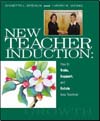

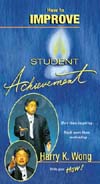
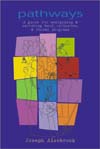


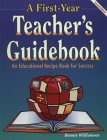
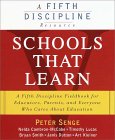

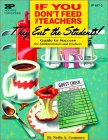
 Effective
Teaching...
Effective
Teaching...